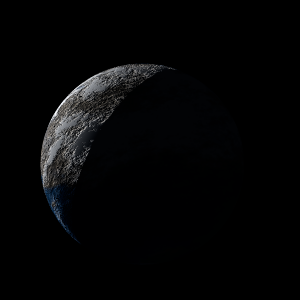|
|
Space Astro
|
Info for exoplanet "Muhihyu-bya"
| Scientific (actual) data |
|---|
| Name | GJ 9827 d |
| Planet status | Confirmed |
| Planet mass | 0.01076 |
| Radius | 0.17441 |
| Orbital period | 6.20183 |
| Semi major axis | 0.0555 |
| Orbit eccentricity | 0 |
| Inclination | 87.39 |
| Discovered | 2017 |
| Updated | 2023-12-10 |
| Tzero tr | 2457740 |
| Impact parameter | 0.91 |
| K | 1.7 |
| Temperature (kelvin) | 604.9 |
| Publication | Published in a refereed paper |
| Detection type | Primary Transit |
| Mass measurement type | Radial Velocity |
| Radius measurement type | Primary Transit |
| Alternate names | K2-135 d |
| Star name | GJ 9827 |
| Right ascension | 351.77° |
| Declination | -1.29° |
| Mag v | 10.4 |
| Star distance | 30.3 |
| Star metallicity | -0.28 |
| Star mass | 0.659 |
| Star radius | 0.651 |
| Star sp type | K6V |
| Star temperature | 4255 |
| Wikipedia article | GJ 9827 d |
Back
| |
| Fictional info (?) |
|---|
| Suggested name | Muhihyu-bya |
| Planet type | Hot planet |
| . |
| Estimated population | 50000000000 |
| Atmosphere | Carbon dioxide | 64% |
| Methane | 34% |
| Oxygen | 0.91% |
| Water | 0.00026% |
| Atmospheric pressure | 0.9 bar |
 |
| Moon | Pega'gua | Large round oceanic moon |
| Ponya Bibyu Pesu | Large irregular oceanic planetoid |
| Pyuipo Bya | Very small round gaseous asteroid |
| Byoro | Very small almost round oceanic moon |
| Kyajuda'bebyomu | Medium-sized irregular crater-filled moon |
| Shoi-sucha Ko | Medium-sized almost round ice asteroid |
| Chimohi-kujo | Medium-sized round oceanic comet |
| Zezuka-kara | Huge potato shaped rocky moon |
| Nyatohyu Yanya | Large almost round ice moon |
| Shoho Kifucho'shu | Small irregular oceanic moon |
| Myajuka Da | Small potato shaped rocky asteroid |
| Google search for Muhihyu-bya |
|
Website by Joachim Michaelis
|
|
|
|